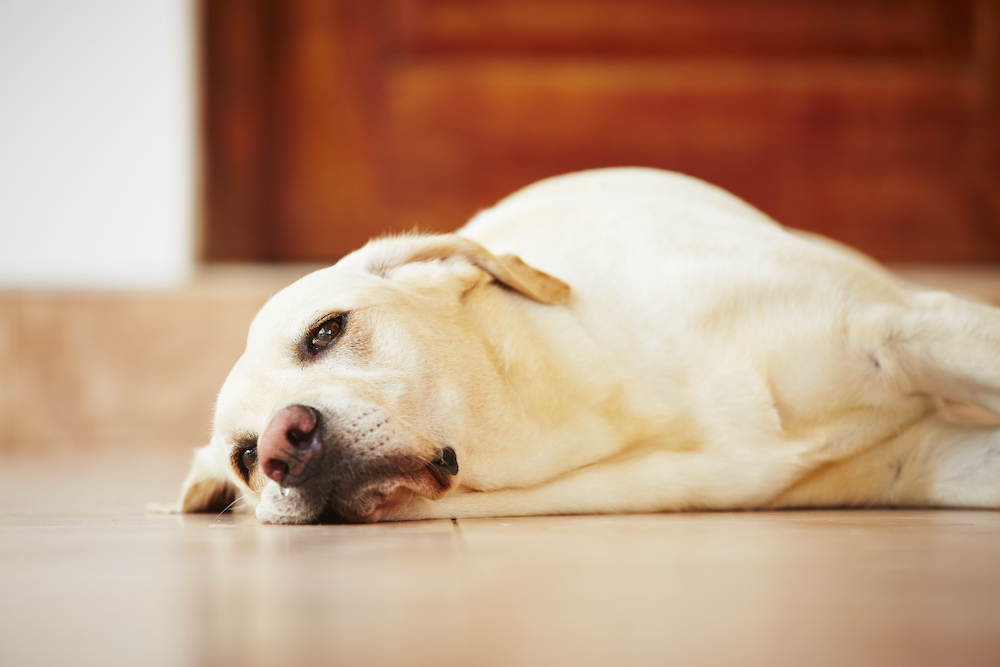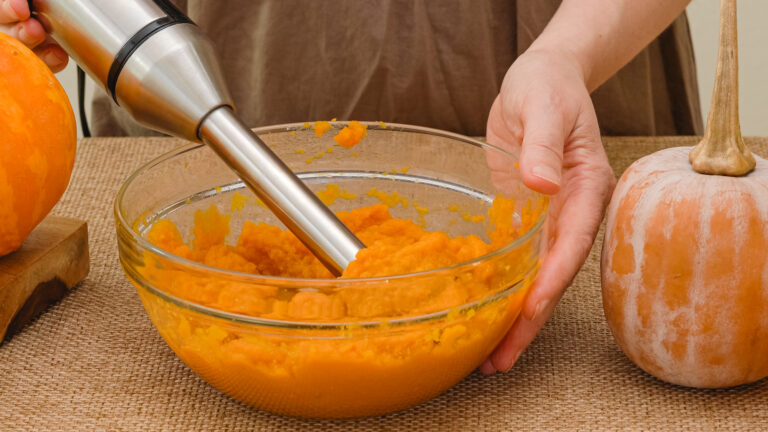At some point, even if they are a paragon of good health, your dog will have diarrhea.
There are a whole host of things that can cause diarrhea, some serious, some less so. If your pup’s diarrhea has less serious origins (they snuck a treat off the street, for example), there are some simple steps you can take at home—with the blessing of your veterinarian—to ease their stomach.
Here are a few home remedies for diarrhea, and some tips for understanding when you can address digestive upset with at-home treatments, and when you should make a beeline for your vet’s office.
Why your dog might have diarrhea
Diarrhea is when your dog is producing loose or watery stools, typically more frequently than they normally poop. Diarrhea itself isn’t a disease per se; it’s an indicator of other conditions or digebstive mishaps.
Some of the causes of diarrhea include: dietary indiscretion (eating something they shouldn’t have), a sudden change in diet, parasites, bacterial or viral infections, emotional distress, allergies, or serious illnesses like kidney disease. Read more about decoding your dog’s vomit here).
When to use an at-home remedy for diarrhea
First, take steps to determine what might be causing your dog’s diarrhea, and assess how they seem to be feeling beyond the GI upset. It’s important to understand if your dog’s digestive issue is a temporary consequence of eating the wrong thing, or if it’s a more serious or ongoing problem. While mild diarrhea can resolve itself with some TLC, it can also be a sign of serious illness.
So, if you can, try to retrace your dog’s steps before they got sick. Was there some change in routine? Did they have an opportunity to snatch something from the sidewalk, or off of your counter?
If your dog has a bout or two of diarrhea, it’s typically nothing to worry about. Sudden diarrhea or other gastrointestinal glitches very often mean your dog got into the garbage, or they’re experiencing some stress. If you suspect this is the case, and you’ve got a healthy adult dog who is otherwise acting normally, you can try an at-home treatment.
If your dog is in pain or seem unusually lethargic, or is vomiting blood, has vomited more than once or twice, or has more than a day or two of diarrhea, see your vet immediately.
Depending on their assessment, a vet may recommend a range of different tests, treatments, or protocols like an elimination diet.
Home remedies for diarrhea
If you’ve determined that your dog is suffering from a bit of “garbage gut,” or you’ve spoken to your vet about your dog’s condition and they’ve given the green light for an at-home treatment, you can try one of these simple remedies.
Fasting
If your dog has a sudden case of the runs, one simple course of action is a short fast—that is, withhold food for 12 to 24 hours.
Withholding food can sound mean, but we’re really just talking about skipping a meal.
Fasting gives your dog’s body a break from the energy-intensive process of digestion. Research has shown that fasting can have positive effects on the gut microbiome (the billions of microorganisms in an animal’s digestive tract) and the movement of food through the gut, both of which may play a role in GI symptoms. During this period, make sure your dog has access to, and is drinking water as diarrhea can dehydrate your dog. And only take this step if you’ve got a healthy, adult dog (avoid fasting puppies, lactating dogs, and any pup with a serious medical condition).
Bland diet: chicken and rice
After a short fast, you may opt to start feeding a “bland diet,” which is typically a no-frills combination of a lean protein like skinless chicken or turkey and white rice (be sure to use a protein you know your dog can tolerate). The best way to prepare the protein is to boil it in unsalted water and shred it. Combine it with cooked rice in a ratio of 2:1 (two parts protein to one part rice). Be sure to skip any added fats like butter, or any salt, spices or other additives. Feed your dog small portions of the bland diet for a few days. Start with one to two tablespoons of food, depending on the size of your dog, and increase the portions if they tolerate it. If your dog seems back to normal after a few days, transition them back to their regular diet by combining small amounts their normal food with the bland diet. Bland diets should only be fed for a few days as they don’t provide complete and balanced nutrition. Speak to your veterinarian if your dog’s poop isn’t returning to normal, or if they are showing other signs of not feeling well (lethargy, vomiting, not wanting to eat or drink anything).
Bone broth
Bone broth can be an even easier-on-the-stomach option for dogs with GI upset. Bone broth is made by simply simmering bones and connective tissue from animals or fish for a long, long time—24 hours or more. The long cooking process creates a nutrient-dense elixir that’s said to have many health benefits for people, and dogs.
Simmering bones draws out minerals including calcium, magnesium, and phosphorus. The collagen in cartilage and bone also yields gelatin, a protein that helps support gut health and joint health. Just be sure it’s plain without any added seasonings or onions. Read more about preparing bone broth here.
Plain pumpkin
Pumpkin is a bit of a nutritional Swiss Army knife as it serves as a healthy, low-calorie treat (at only 80 calories a cup), and a digestive helper that can aid both constipation and diarrhea. Pumpkin has plenty of soluble fiber, a key component in keeping your dog’s digestion running smoothly. Fiber also acts as a probiotic, promoting the growth and supporting the activity of helpful bacteria in your dog’s digestive tract and helping to keep potentially harmful bacteria in check.
As a home remedy for diarrhea, try giving your pup a small amount of pureed pumpkin (one to three tablespoons, depending on your dog’s size). Make sure that it’s 100% pumpkin with no sugar or other additives, which may upset your dog’s stomach even further. Some canned pumpkin has a lot of added salt, which should be avoided. It’s also important to watch out for pumpkin pie filling. This is very different from pure pumpkin and the sugar and spices are not something your pup’s stomach will appreciate. The excessive sugar will also upset the balance of your dog’s microbiome, which may cause your dog’s symptoms to be prolonged or worsened.
If you’re cooking pumpkin at home, try cutting up pieces of pumpkin, boiling in unsalted water until cooked through and then mashing it. Again, skip the butter, salt, or spices. You can store your pumpkin puree in your fridge for three or four days. You can also freeze it in small portions and it will keep for a few months. Be sure to remove all seeds and skin before feeding the cooked pumpkin to your dog, and make sure it isn’t too hot before serving.
What not to do
Don’t give your dog an over-the-counter medication that you might have in your own medicine cabinet. Speak to you vet before giving your dog any medications.
Don’t continue an at-home treatment for more than a few days. And don’t wait if your dog’s diarrhea is persisting beyond a day or two without seeming to get better, if they’re vomiting, in pain, or refusing to eat—call your veterinarian.










